Alternative_Grounding_Electrode_Systems_Grounding_Series_(Part_9).pdf
Transcript:
[0m:4s] Hi I'm Josh Bloom, welcome to another video in the RSP Supply education series. If you find that these videos are helpful to you, it certainly helps us out if you could give us a big thumbs up and subscribe to our channel.
[0m:16s] In today's video, we are going to continue on in our series which we are discussing the basics of electrical grounding.
[0m:24s] In our last video, we talked about what it means to ground to Earth, and some of the basic requirements the NEC mandates when grounding.
[0m:34s] We also talked about the most common method for grounding to Earth, which is to use a ground rod.
[0m:40s] If you have not already seen that video or any of the other videos in this series, we encourage you to go back and watch them as they might help you better understand some of the topics we will be discussing today.
[0m:53s] For the purpose of this video, we want to talk about some of the other types of grounding electrode systems that can be used besides a common grounding rod. The methods we will discuss for this video are all NEC approved if done properly.
[1m:11s] Each installation method is dependent on the individual application you are in.
[1m:16s] The different methods we will be discussing include electrolytic grounding electrode rods, ground rings and ground radials, and concrete encased electrodes.
[1m:28s] Let's start with electrolytic grounding electrodes, which can also be known as a chemical rod.
[1m:35s] These are commonly used in areas where the resistivity of the earth is high or where space might be limited.
[1m:43s] These are a very good alternative to traditional grounding rods. One note to keep in mind: before installing this type of grounding system, approval must be obtained through proper channels who have jurisdiction over this area.
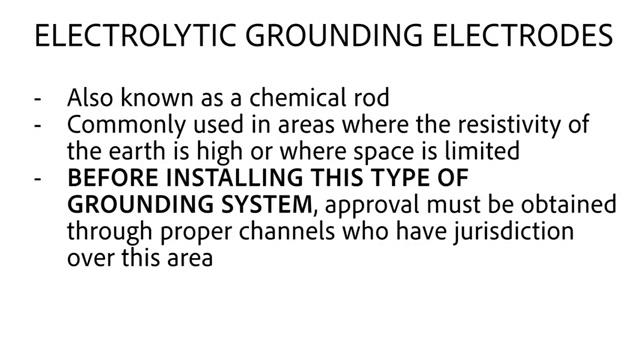
[1m:59s] The system typically includes a hollow copper pipe filled with an electrolytic charge material.
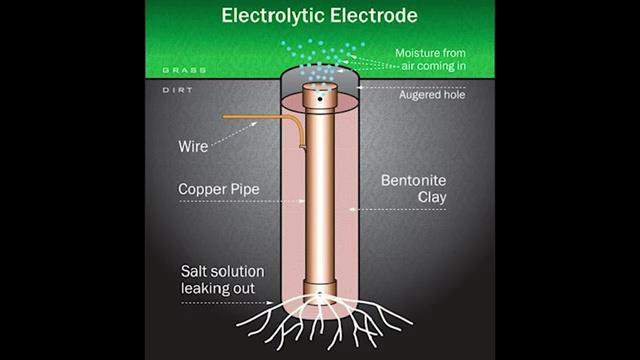
[2m:7s] The material interacts with the moisture in the soil creating a highly conductive electrolyte material that can assist in proper grounding in areas where using a ground rod is insufficient.
[2m:22s] Next let's discuss ground rings. A ground ring is a system of grounding hardware that is usually placed around some kind of structure and is very commonly used for communication sites, the ring that encircles the structure must be at least two and a half feet below the soil surface and be in direct contact with the soil.
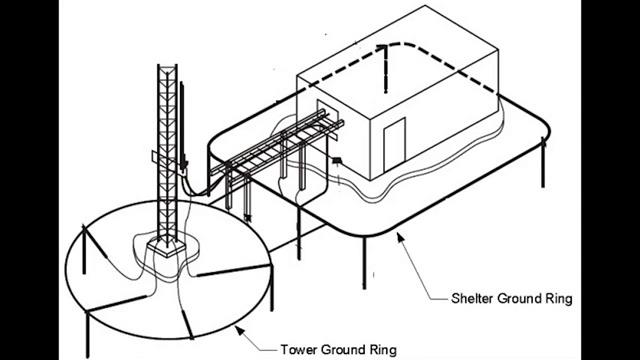
[2m:47s] It is also required that bare copper conductor be used for this purpose with a size of no less than two gauge wire.
[2m:55s] In some cases, you will see the use of supplemental ground rods and grounding plates with this system to increase its effectiveness. In some cases, a ground test well can also be added to provide the ability to test the ground resistance at that site.
[3m:14s] Now let's talk about ground Radials. Ground Radials are most commonly used in conjunction with ground rings.
[3m:23s] The purpose of ground radials is to further dissipate fault current away from sensitive equipment at a particular site.
[3m:32s] Radials typically consist of conductors that have the same characteristics as ground rings. They are installed so that they point in the opposite direction of the structure, but are bonded to the main ground ring.
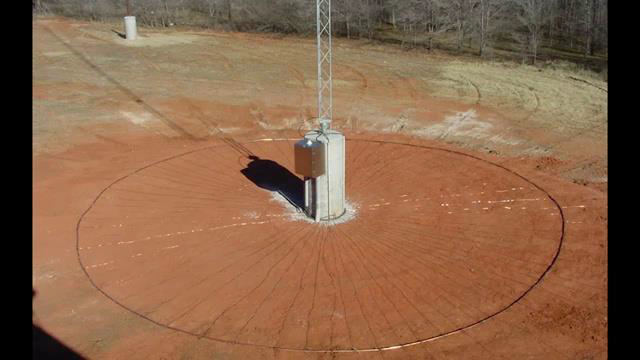
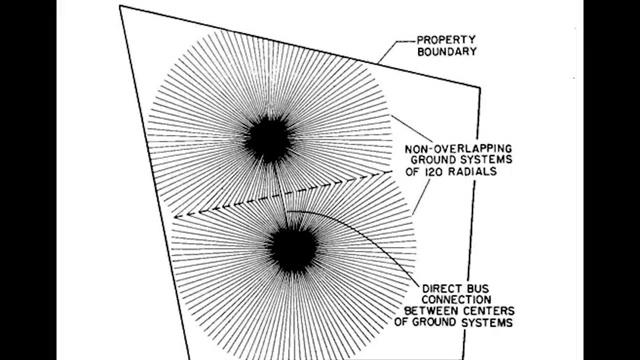
[3m:47s] As with ground rings, supplemental ground rods and grounding plates can be used to increase the effectiveness of this type of system.
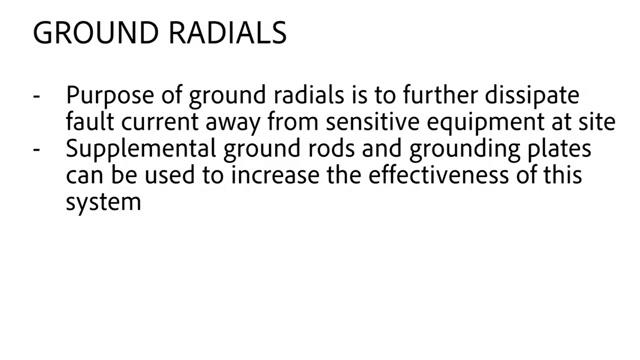
[3m:56s] The last system we want to talk about today is a concrete encased electrode grounding system commonly referred to as a Ufer ground.
[4m:6s] NEC states that if this system is used that the grounding electrode be encased in at least two inches of concrete,
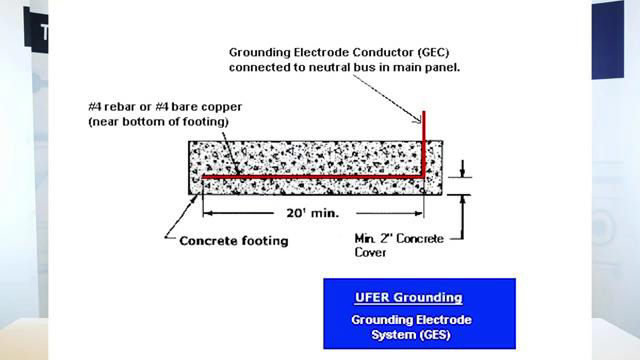
[4m:14s] and that the electrode would be located near the bottom of the concrete foundation,
[4m:19s] and that the foundation must be in direct contact with the earth.
[4m:23s] It is required that a copper conductor, no smaller than four gauge wire, be used or other types of specifically coated steel.
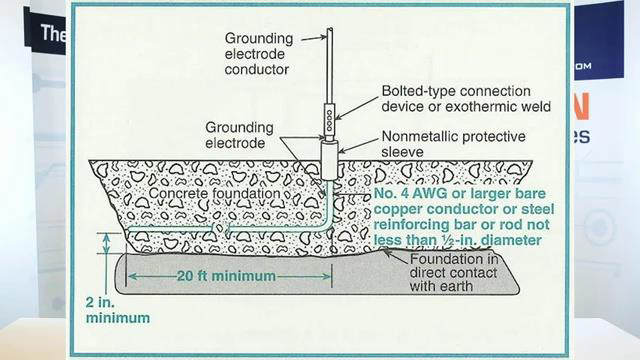
[4m:33s] This type of system offers a very good alternative to a more conventional ground system, such as the use of a ground rod.
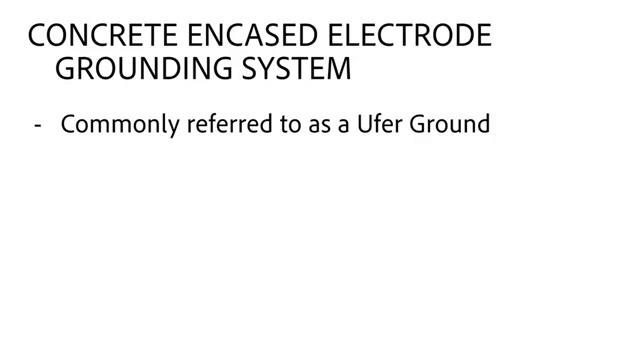
[4m:42s] As you can see, there are many different methods that can be used when installing grounding systems at any given site.
[4m:51s] Depending on your specific application, the methods you use may differ from the ones that we have discussed today. Each situation is different and needs to be evaluated individually to ensure that the proper grounding electrode system is used.
[5m:7s] For a full line of grounding equipment and thousands of other products, please go to a website. For more information or other educational videos, go to RSPSupply.com, the Internet's top source for industrial hardware. Also, don't forget: like and subscribe.




